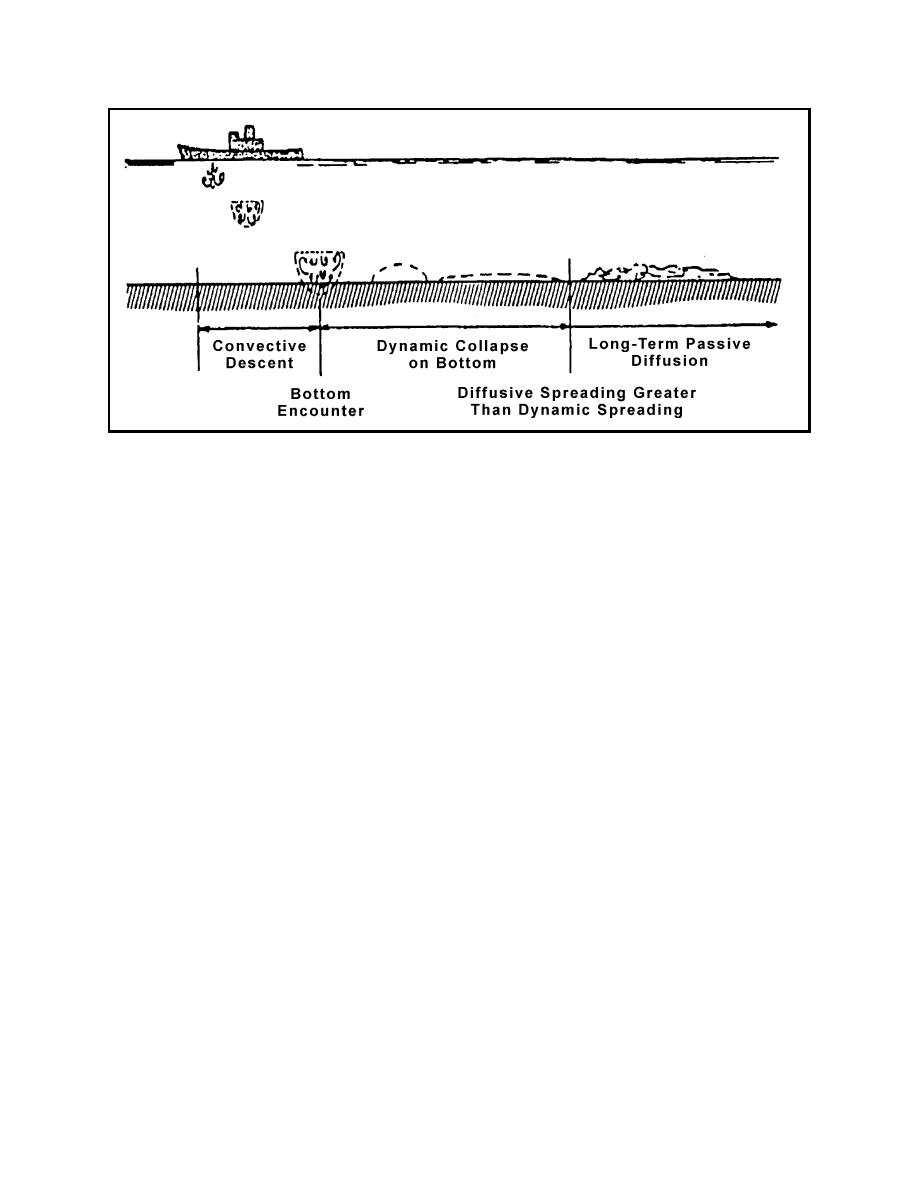 |
||
|
|
||
| |||||||||||||||
|
|
 Figure D1. Illustration of placement processes
Model Input
Input data for the model are grouped into the following general areas:
(a) description of the disposal site, (b) description of site velocities, (c) controls
for input, execution, and output, (d) description of the dredged materials,
(e) description of the disposal operation, and (f) model coefficients.
Ambient conditions include current velocity, density stratification, and water
depths over a computational grid. The dredged material is assumed to consist of
a number of solid fractions, a fluid component, and conservative dissolved
contaminants. Each solid fraction has to have a volumetric concentration, a
specific gravity, a settling velocity, a void ratio for bottom deposition, critical
shear stress, and information on whether or not the fraction is cohesive and/or
strippable. For initial-mixing calculations, information on initial concentration,
background concentration, and water quality standards for the constituent to be
modeled has to be specified. The description of the disposal operation includes
the position of the disposal barge or hopper dredge on the grid; the barge or
hopper dredge velocity, dimensions, and draft; and volume of dredged material
to be dumped. Coefficients are required for the model to accurately specify
entrainment, settling, drag, dissipation, apparent mass, and density gradient
differences. These coefficients have default values that should be used unless
other site-specific information is available. Table D1 lists the necessary input
parameters with their corresponding units. Table D1 also lists the input param-
eters for determining the contaminant of concern to be modeled based on
dilution needs. More detailed descriptions and guidance for selection of values
for many of the parameters are provided directly on-line in the system.
D2
Appendix D Short-Term Fate of Dredged Material Model
|
|
Privacy Statement - Press Release - Copyright Information. - Contact Us - Support Integrated Publishing |